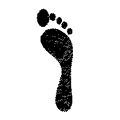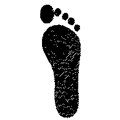4-H youth and their livestock can help improve the way you walk - part 4
4-H youth and their livestock can help improve the way you walk - part 4
Livestock evaluation is about using observation skills to identify positive and negative characteristics in livestock. According to Michigan State University Extension, one trait that is important in selecting good livestock is how they are able to move. An animal that walks smooth and effortlessly is a good indicator of being structurally correct in its skeleton and a sign of good health and longevity.
Now what is intriguing is that once you learn what to look for when evaluating how animals like cattle, sheep and pigs walk, you can then also start to observe and make inferences about the way people, including friends and family members, walk as well. This article is a continuation of a series by MSU Extension that will discuss over pronation and the potential stress this may have on the human and animal body. For humans over pronation is essentially a fancy term for flat feet. According to foot.com, “The framework of the foot begins to collapse, causing the foot to flatten and adding stress to other parts of the foot.” Kristen Price a certified athletic trainer with Playmakers states that, “individuals that exhibit over pronation typically increase the weight and friction placed on the inside of their foot, particularly around the arch of the foot which may lead to increased stress and pain on the inner foot, ankle, shin, knee, hip and low back.”
Do you want to check to see if you have flat feet? This is an easy test. Get the bottom of your feet wet and step onto a piece of paper. If you can see your entire foot print then you have flat feet. Ideally, you will see only half of your arch. But what if it’s clear from your wet footprint that you have flat feet instead?
“Adding an arch support or wearing a stability shoes can help to maintain support and maintain your medial arch which helps to keep your body in proper alignment, Price said.
 Livestock obviously have hooves that have a different form and framework from our feet, however, livestock that have weak pasterns or that have a smaller inner toe (possible in cloven hoofed animals such as pigs, sheep and goats) will experience similar results to people who exhibit over pronation. Use your observation skills to determine if your livestock have even toe sizes and if they are strong in their pasterns.
Livestock obviously have hooves that have a different form and framework from our feet, however, livestock that have weak pasterns or that have a smaller inner toe (possible in cloven hoofed animals such as pigs, sheep and goats) will experience similar results to people who exhibit over pronation. Use your observation skills to determine if your livestock have even toe sizes and if they are strong in their pasterns.
The next article in this series will discuss supination. Supination is almost the opposite of over pronation in that most of the weight stays on the outside of the foot or hoof.
4-H members can choose to learn a lot about observation skills, making inferences, physical health and even livestock evaluation. If you are interested in learning more about these areas or other learning opportunities 4-H provides, visit the MSU Extension website for more information.



 Print
Print Email
Email



